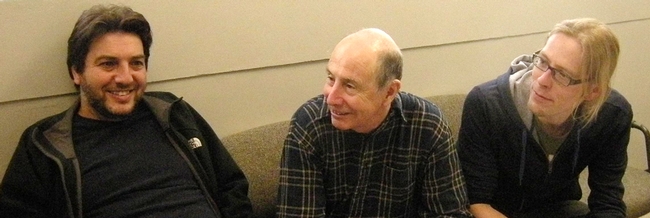Sept. 21, 2012

Schebb received the award, the 2012 Sciex LC /MS Award, for his “extraordinary work in the field of LC/MS” on Sept. 18 during the German society’s workshop in Wuppertal, Germany. The award includes a prize of 3000 Euros about $4,500 from AB Sciex, a major producer of MS systems for a host of applications, including drug discovery, clinical research, food production, and toxicology.
Schebb conducted the research from 2009 to 2011 in the UC Davis Laboratory of Pesticide Biotechnology, directed by Hammock, distinguished professor of entomology and principal investigator of the Superfund Research Program grant.
Schebb, who has a doctorate in analytical chemistry from the University of Munster, Germany, is now principal investigator and head of a lab at the Institute of Food Toxicology and Chemical Analysis at the University of Veterinary Medicine Hannover in Hannover, Germany (link to the website: schebb-web.de).
The research, “Investigation of Human Exposure to Triclocarban after Showering and Preliminary Evaluation of its Biological Effects,” was published in the journal Environmental Science and Technology and was co-authored by Hammock and four other scientists in the Hammock lab: Bora Inceoglu, K. C. Ahn, Christophe Morisseau and Shirley Gee.
The awarded study measured the human exposure with TCC by the use of personal care products. “It was a surprise that a single shower led to such high urinary concentration of TCC metabolites” Schebb said. Moreover, the study revealed that TCC strongly inhibits the enzyme soluble epoxide hydroxylase (sEH), suggesting that exposure could impact human health. The Hammock lab has published a series of studies on the efficacy of sEH suppression in the regulation of blood pressure, inflammation, and pain. “ Though sEH inhibition has largely beneficial effects on mammalian physiology, these is not an action the consumer expect from the use of a personal care product”. Schebb commented on these results.
Since the publication of the 2011 study, Schebb has been involved in five follow-up studies on TCC, showing for example that TCC also can form reactive metabolites which covalently bind to cellular macromolecules.
Schebb’s award-winning study was one of some 15 toxicological and laboratory methods papers he has co-authored on work with the Hammock group.
(Editor’s Note: Eddy Ball of the Office of Communications and Public Liaison, National Institute of Environmental Health Sciences, NIH, contributed to this article.)

--Kathy Keatley Garvey
Communications specialist
UC Davis Department of Entomology
(530) 754-6894


